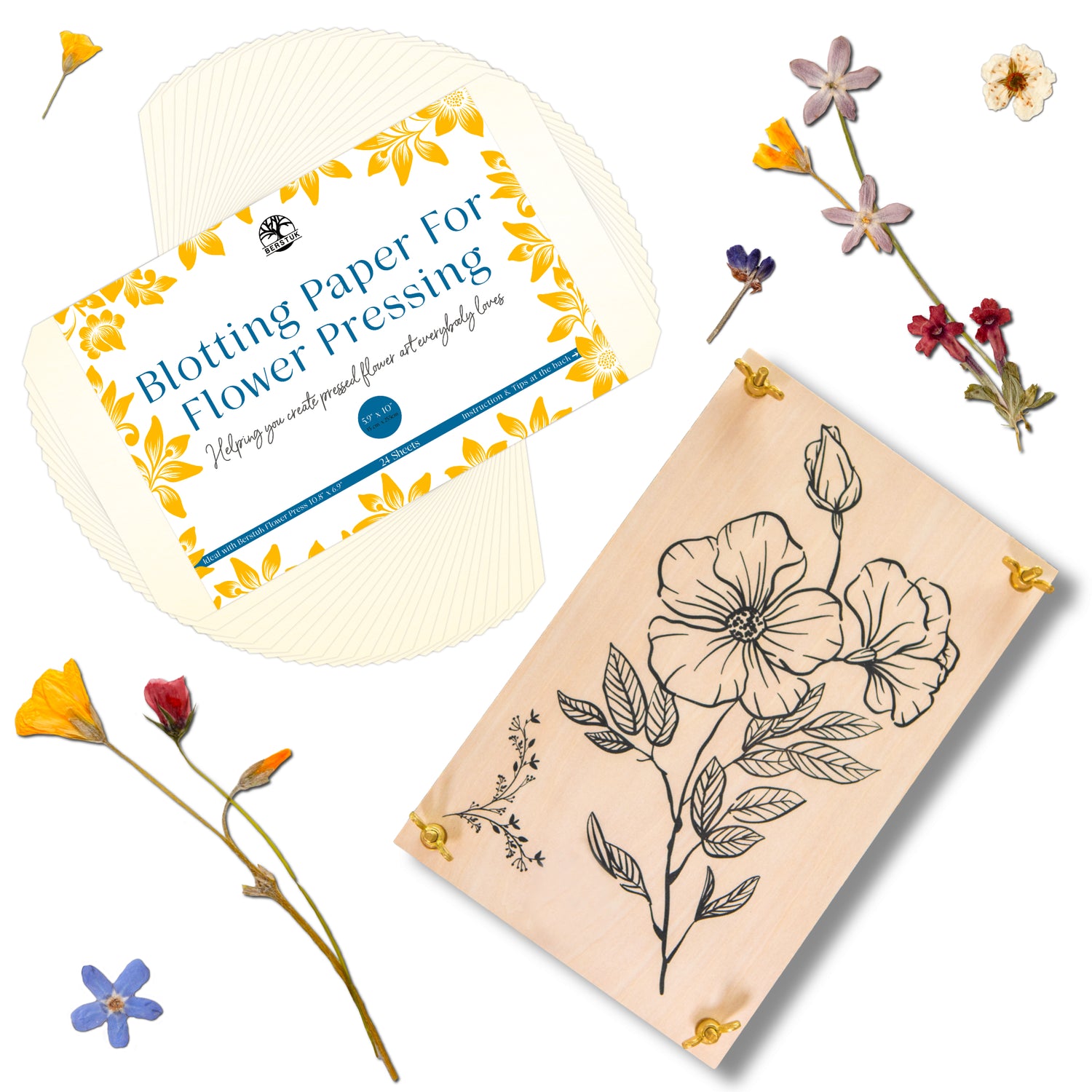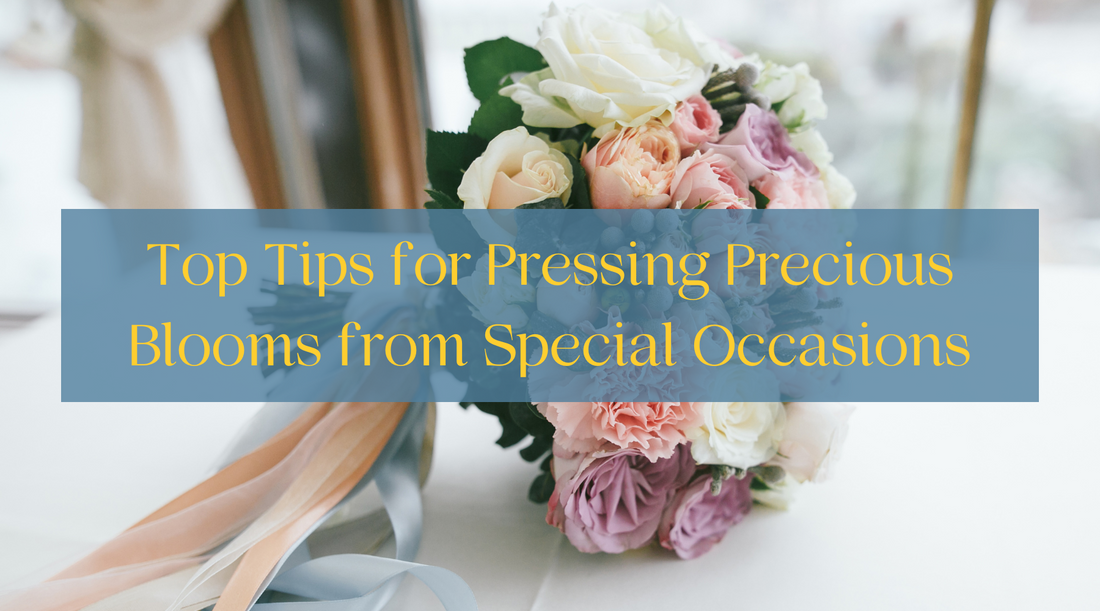There's something profoundly beautiful about preserving flowers, as if we're capturing a moment of fleeting beauty and holding onto it forever. For events like weddings or other significant milestones, preserving flowers adds a touching sentimental value. This guide is your friendly companion on the journey of flower preservation, sharing tips on how to avoid mold and enhance your chances of success. This is particularly important if you are new to pressing blooms and you want to start with preserving your precious flowers. From picking the perfect blooms to the right drying methods, these insights are your stepping stones towards creating cherished keepsakes that will warm hearts for years to come.
Choose Fresh and Healthy Flowers
The key to successful flower preservation starts with your choice of flowers. Fresh, vibrant, and healthy blooms are your best friends. Choose flowers with lively colors, sturdy petals, and a flawless appearance. Wilting, discolored, or damaged flowers can become moldy during pressing and could spoil your efforts. Before diving into the preservation process, gently examine each flower. Touch the petals delicately to make sure they're robust enough to endure pressing. Remember, working with resilient flowers puts you on the path towards a successful preservation journey.
Use Clean and Dry Tools
Cleanliness is at the heart of flower preservation. Your tools, from the flower press to scissors and blotting paper, should all be clean and dry. Any residual moisture or impurities could invite unwanted mold growth and potentially harm your precious flowers. Always store your flower press in a dry and dust-free spot. Regular cleaning will keep debris and residue at bay. And when you're handling the flowers, ensure your hands are clean, dry, and limit unnecessary contact with the blooms to avoid contamination.
Press Individually or in Small Batches
Preserving each flower or small batches at a time is a cautious and thoughtful approach to flower pressing. This method facilitates better airflow around each flower, lessening the risk of mold. By pressing flowers of same species on the same layers of blotting paper in the press and ensuring they're not touching, you prevent mold from spreading and have a better control over the process.
If you have a larger flower press and wish to press multiple flowers simultaneously, create small batches to fit comfortably in the press. Place a layer of blotting paper between each batch to give enough breathing space and avoid overcrowding. By focusing on smaller batches, you can monitor each one closely and quickly intervene if any issues arise.
Practice with Less Precious Blooms
Practice makes perfect, especially when it comes to the art of flower preservation. Before working with your most cherished blooms, start with flowers that are less precious to you. Common flowers like daisies, lavender, small wildflowers and foliage make ideal training partners. During your practice sessions, try different pressing techniques, observe drying times, and overcome challenges. The wisdom from these trial runs will be priceless when you start preserving your treasured blooms.
Thin Out Thicker Flowers
Thicker flowers, with robust petals or dense centers, need a little extra attention during pressing. Consider gently thinning out thicker flowers or pressing individual petals separately (that's the method I use for ALL precious blooms). Removing some outer petals and separating dense centers before pressing allows for a more even distribution of moisture and a better air circulation. This care reduces the chance of mold forming and ensures each beautiful petal is preserved. Then you can just reconstruct the flowers any way you wish.
Separate Thick Flower Centers
Thick-centered flowers require careful preparation. The key is separating the centers from the petals, allowing for a more effective drying process and reducing the chance of trapped moisture turning into mold. Whether you're removing the center from the petals or pressing flowers with thick centers intact, ensure there's enough air circulation throughout the pressing process. By being thoughtful with thick flower centers, you set up for a successful preservation. I like to press centres of flowers on a different layer or even in another press so all layers in the press are uniform.
Achieve Uniform Layer Thickness
Creating a uniform layer thickness within the press is a key part of achieving evenly dried and preserved flowers. Paying attention to the thickness of each bloom and arranging them thoughtfully prevents mold and ensures each flower has the space it needs. Use tissue paper, cotton pads or extra blotting paper between layers if you're working with a variety of flower sizes. Regularly check on the flowers during the drying process, and adjust as needed. For your precious blooms, you may want to check it as often as every 2-3 days and change paper if need be.
Conclusion
Flower preservation is more than an art—it's a heartwarming process that allows us to capture and cherish special moments. It's all about choosing fresh flowers, keeping your tools clean, and pressing flowers one by one or in small groups. By practicing with simpler flowers first and paying extra attention to thicker ones, you'll get the hang of it. Try to make sure each layer of flowers in your press is the same thickness - this helps them all dry at the same pace.
Here is our very short Instagram video to help you put these ideas into practice, so make sure you watch it too:
Click HERE.
But remember, flowers are a part of nature, and nature can be unpredictable. Sometimes, even if you do everything right, a flower might not turn out perfect, and that's okay! This is part of the fun and mystery of working with natural elements. So, go ahead, give it a try, and enjoy the journey of preserving beautiful moments with flowers. Enjoy your flower pressing!


